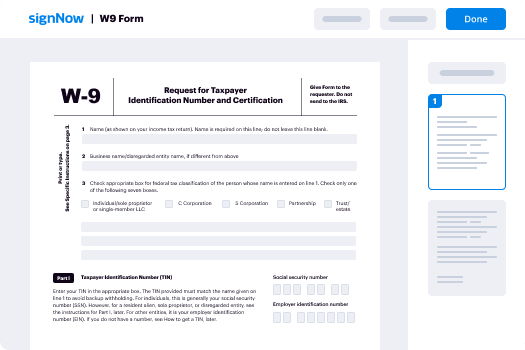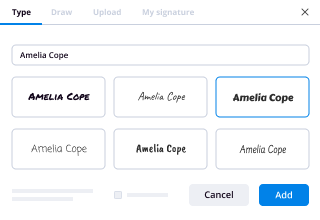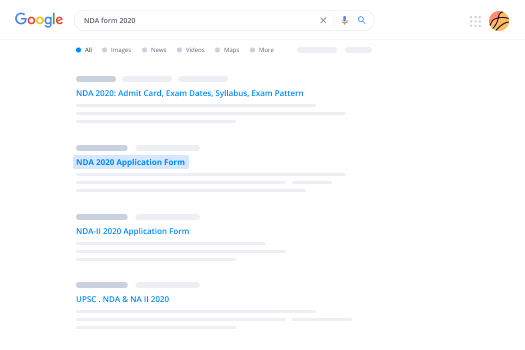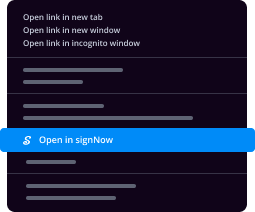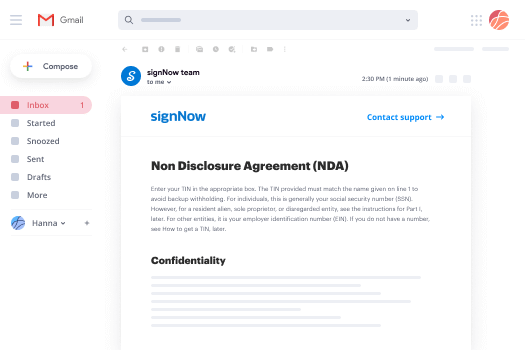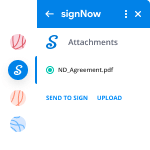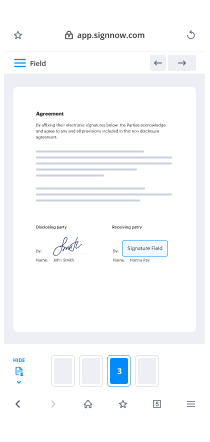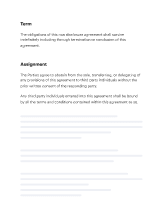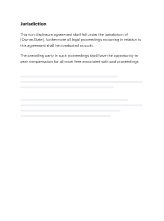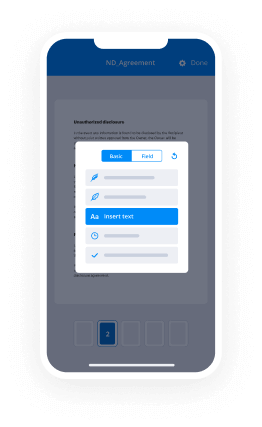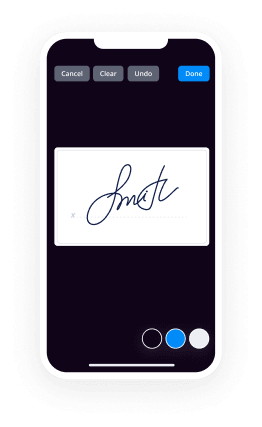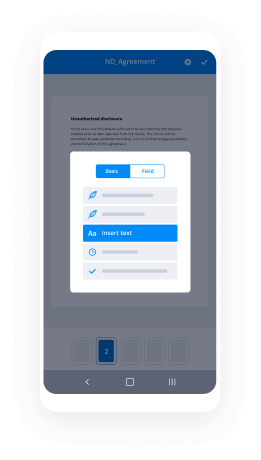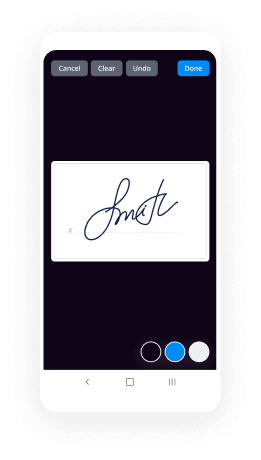S UPERIOR C OURT OF THE
D
ISTRICT OF C OLUMBIA
E
AST OF THE R IVER
C
OMMUNITY C OURT
P
ROGRAM M ANUAL OF
P
OLICIES AND P ROCEDURES
JANUARY 2006
Prepared by:
East of the River Community Court Policies and Procedures Work Group
A
CKNOWLEDGEMENTS
This manual was prepared by the East of the River Community Court Policies and
Procedures Work Group, which in cluded the following members:
Michael Francis, Community Cour t Coordinator, Superior Court
Lisa Baskerville Greene, Deputy Chief, Misdemeanor Trial Section, U.S.
Attorney’s Office for the District of Columbia
Keelon Hawkins, Supervisor, General Supe rvision Unit, D.C. Pretrial Services
Agency
Joseph Jorgens, Coordinator for the Defens e Bar, District of Columbia Superior
Court Trial Lawyers Association
Rodney C. Mitchell, Program Analyst/L egal Advisor, Criminal Justice
Coordinating Council
Annesley K. Schmidt, Community Court Researcher, Superior Court
Michael Williams, Branch Manager, Gene ral Supervision Branch, D.C. Pretrial
Services Agency
In addition to the Work Group, the Superior Court of the District of Columbia’s East of
the River Community Court wishes especially to thank the following individuals for their
dedication and contributi ons to this project:
Claire Johnson, Director of Justice a nd Community Relations, D.C. Pretrial
Services Agency
Judge Ann O'Regan Keary, Deputy Presiding Judge of the Criminal Division and
Presiding Judge of the East of the River Community Court
Clifford Keenan, Director of Operati ons, D.C. Pretrial Services Agency
Greg Thomas, Community Relations Specialist, Court Services and Offender
Supervision Agency for the District of Columbia
Nancy Ware, Executive Director, Criminal Justice Coordinating Council
F
OREWORD
This manual of the East of the Rive r Community Court’s (ERCC) policies and
procedures seeks to introduce the overall philosophy, direction and operations of the
ERCC. This manual is not intended to be an exhaustive, step-by-step, how-to, instruction
manuscript. In addition, it generally describe s, through its various sections, the alliances
and collaboration between stakeholder agencies that are vital to realizing the mission of
the ERCC. It is our hope that this manual w ill serve as a tool to assist the reader in
understanding the basic operations of the ERCC . More detailed information, regarding
the operations and systems of the other partnering agencies, may be obtained by
contacting those agencies enumerated in the narrative that follows.
T ABLE OF C ONTENTS
I. INTRODUCTION ........................................................................\
.......................... 5
II. MISSION STATEMENT AND GOALS ............................................................... 7
III. PARTICIPATING AGENCY ROLE S AND RESPONSIBILITIES ..................... 7
The Superior Court's East of the River Community Court ..................................... 7
East of the River Community Court Defense Attorneys .......................................... 8
The United States Attorney’s Office ........................................................................\
8
The D.C. Pretrial Services Agency ........................................................................\
. 8
Court Services and Offender Supervision Agency .................................................. 9
Metropolitan Police Department ........................................................................\
.. 10
IV. CASE PROCESSING COMPONENTS.....................................\
........................... 10 Eligibility Criteria ........................................................................\
......................... 10
Citation Release ........................................................................\
............................ 10
Lock-up Cases ........................................................................\
............................... 10
Papering Cases ........................................................................\
............................. 11
Arraignment ........................................................................\
.................................. 11
Release Non-Compliance ........................................................................\
.............. 11
Status Hearing ........................................................................\
.............................. 12
Disposition ........................................................................\
.................................... 12
V. DIVERSION OPTIONS ........................................................................\
............... 12 First Time Offender Program ........................................................................\
....... 13
Deferred Prosecution Agreement (DPA) .............................................................. 13
Deferred Sentencing Agreement (DSA) ................................................................ 13
John School ........................................................................\
................................... 14
Superior Court Drug Intervention Program (Drug Court) .................................. 14
Stet Docket ........................................................................\
.................................... 14
Mediation…………………………………\
……………………………………...14 Bridges—Early Intervention Program for Female Prostitutes ............................ 15
Diversion Non-Compliance ........................................................................\
.......... 15
VI. PRETRIAL SUPERVISION ........................................................................\
............ Supervision ........................................................................\
.................................... 15
Social Services ........................................................................\
.............................. 16
Community Service ........................................................................\
....................... 16
VII. STATISTICAL REPORTING ........................................................................\
..... 17
GLOSSARY OF ACRONYMS........................................................................\
................ 18
E AST OF THE R IVER C OMMUNITY C OURT
P
ROGRAM M ANUAL OF P OLICIES AND P ROCEDURES
\
I. INTRODUCTION
Traditional courts find it difficult to addr ess the underlying problems that may lead
individuals to commit crimes, due, in many cas es, to larger case loads and an emphasis
on processing cases. Furthermore, in tradi tional courts, the handling of cases involving
offenses such as prostitution and drugs has done little to change the behavior of
offenders, make streets safer, or enhance the quality of life in communities. This leads
communities to conclude that the courts do little to reduce recidivism and that the
criminal justice system is little more than a revolving door for offenders.
Community courts seek to build stronger and safer neighborhoods, reduce recidivism and
improve defendants’ lives by addressing the und erlying problems that may lead them to
commit crimes, and increase the public's trust and confidence in the criminal justice
system. Community courts strive to achieve these goals by utilizing a problem solving
approach with a strong em phasis on building partnerships among government agencies,
social service providers, and community groups. In addition, community courts
recognize that quality of life cr ime impacts the whole community as well as individuals.
If not addressed, quality of life crime can er ode community order, lead to neighborhood
decay and create an atmosphere where more serious crime can flourish.
The Superior Court of the District of Columb ia (Superior Court) established the East of
the River Community Court (ERCC) in September 2002. This problem-solving
court was a response to the challenges faced by many of the East of the River
communities of Washington, DC, including increasing rates of poverty, crime and
disorder that were higher than many other communities of the city.
1 In addition, the
Superior Court sought to achieve time-efficient misdemean or case processing and reduce
police overtime. Initially, the ERCC handled only U.S. misdemeanor cases
2 that
originated in the District of Columbia's Sixth Police District (6D) but did not involve
domestic violence. In June of 2003, the ERCC expanded to include the same kinds of
cases originating in the Se venth Police District (7D).
Currently, the ERCC serves as a calendar c ourt that adjudicates all U.S. misdemeanor
cases not involving domestic violence
3 ( e.g., drug possession, sexual solicitation,
unlawful entry, simple assault, and illegal dum ping) that occur in the East of the River
community. One judge presides over the ERCC and hears all phases of a case from
1 The East of the River community refers to the neighb orhood east of the Anacostia River in the District of
Columbia. It is comprised of Police Districts 6D and 7D and approximates Wards 7 and 8 of the city.
2 U.S. misdemeanor cases are those cases prosecuted by the United States Attorney’s Office in contrast to
other lesser misdemeanor cases (traffic and municipal) prosecuted by the DC Office of the Attorney
General.
3 All misdemeanor domestic violence cases are consolidated in Superior Court’s Domestic Violence Unit.
arraignment until final disposition. (However, if a defendant decides to go to trial on a
case, the case is then certified to another co urt for trial and if the defendant is convicted,
the sentencing.) Such continuity allows for more informed judicial decision-making.
The ERCC involves the partnership and co llaboration of several agencies and
organizations and works to iden tify social services needs of the defendant that may be
driving his/her criminal behavior. After fu lly assessing an individual's profile, including
strengths and challenges, the ERCC explores diversion or plea alternatives geared
towards addressing the identified social servi ces needs. Another important aspect of the
ERCC is the use of community service as an essential component of diversion or
sentencing. The ERCC holds firmly to the notion that defendants who are adversely
affecting the quality of life of a community s hould engage in restorative justice measures
by providing service to that community.
Since ERCC's inception, the calen dar’s Presiding Judge and DCSC staff (as part of
ERCC’s community engagement activities) and representative stakeholders have
regularly participated in and addressed commun ity meetings and events held in East of
the River neighborhoods. As a result, the ERCC has obtained information regarding
communities’ priorities involving public safety, views on their neighborhoods’ strengths
and resources and attitudes toward govern ment generally, the court system and
community court in particular. This informa tion is critical to ERCC's efforts to help
solve community problems and involve community members and institutions in problem-
solving justice.
In July of 2003, the Superior Court engaged the Center for Court Innovation (CCI) to
assist in the development of a strategy to enhance the ERCC’s operations in a number of
key areas.
4 As part of the strategy developmen t, the Superior Court conducted a needs
assessment of the East of the River co mmunity. The community needs assessment
included data analysis, stakeholder inte rviews, focus groups, public forums and
participation in numerous community meetings . The results of the needs assessment are
summarized in a report, dated June 2005, enti tled "Superior Court of the District of
Columbia, East of the River Community C ourt, Needs Assessment." Another June 2005
report, entitled "Superior Court of the Dist rict of Columbia, Recommendations for the
East of the River Community Court," provi des CCI's final recommendations regarding
how to enhance ERCC's efficienc y, efficacy, and overall operations.
5
4 CCI, an independent think tank and leader in the field of problem solving justice, founded and operates
the nation's first community court, the Midtown Community Court in Manhattan, New York, as well as the
highly acclaimed Red Hook Community Justice Center in Brooklyn, New York.
5 Copies of the reports can be obtained from Michael O. Francis, Community Court Coordinator at 202-
879-1950 or email to Francismo@dcsc.gov
or write to: Michael O. Francis, Community Court
Coordinator, Criminal Division, Superior Court, 500 Indiana Avenue, NW, Washington, DC 20001.
II. MISSION STATEMENT AND GOALS
The Superior Court's ERCC seeks to reduce low-level and quality-of-life offenses in East
of the River neighborhoods by utilizing a collaborative, problem-solving approach to
crime. Partnering with gove rnment agencies, East of the River residents, community
organizations, faith-based groups, social se rvices providers, and businesses, the ERCC
endeavors to hold defendants accountable, address the factors that often underlie
defendants’ criminal behavior, improve th e quality of life in East of the River
neighborhoods, and increase the public' s confidence in the court system.
The goals of the ERCC are to:
ƒ Enhance the quality of life in East of the River neighborhoods through
recidivism reduction and the performance of community service by
offenders;
ƒ Improve defendants’ lives and accountability by linking defendants with
social services to change antisocial and personally debilitating behavior
and requiring community service;
ƒ Increase public trust and confidence in the court system;
ƒ Forge and strengthen partnerships to solve neighborhood problems; and
ƒ Continue to enhance the operations and management of the ERCC.
III. PARTICIPATING AGENCY RO LES AND RESPONSIBILITIES
The Superior Court’s East of the River Community Court
The DCSC is the court of general jurisdicti on over virtually all local legal matters in
Washington, DC. The court consists of divi sions that provide for all local litigation
functions including criminal, civil, probate, ta x, landlord and tenant, and traffic. Since
2002, a separate Family Court has also been instituted to handle neglect, juvenile and
domestic relations matters
The DCSC’s Criminal Division hears all lo cal criminal matters including felony,
misdemeanor, and traffic cases. The Criminal Division also provides administrative,
clerical, and support services necessary to process the cases of defendants who are
charged with criminal offenses in the District of Columbia.
The DCSC Criminal Division directs the operations of the ERCC. The Presiding Judge
of the ERCC handles all the U.S. misdemean or cases not involving domestic violence
that occur in 6D and 7D.
The ERCC Judge sets the conditions under wh ich all defendants are released prior to
disposition of the case, supervises and m onitors the defendants who are in diversion
programs, and sentences those who plead guilty.
East of the River Community Court Defense Attorneys
The defense attorneys who most regularly represent defendants in ERCC are specifically
trained so they are familiar with the optio ns available in ERCC. Recognizing the
beneficial opportunities to their clients that Community Court might provide, when
appropriate, defense attorneys advise on resolutions of cases short of trial, such as
diversion, community servic e and employment programs . When deciding to give such
advice, the goal is to identify a resolution that addresses the defendant’s challenges
including any drug problems, mental health issues and unemployment. However, the
defense attorney's constitutional and ethical dut y is to represent his/her client. Thus, it
might be the case that, despite the defendant's challenges; the attorney will advise his/her
client to exercise his/her constitutional right to trial. If the defendant makes such an
election, the defendant's case wi ll be certified to a regular criminal division calendar.
The United States Attorney’s Office
The United States Attorney’s Office (USAO) is responsible for the prosecution of
Superior Court misdemeanors and felonies that occur in the District of Columbia. The
USAO is also responsible for prosecuting viol ations of the United States Code in United
States District Court for the District of Columbia.
6 Whit respect to the ERCC, the USAO
reviews cases and identifies those that invo lve defendants whose criminal histories are
not significant, and who are currently charged w ith offenses that are not of a serious or
violent nature. In those cas es, the USAO seeks to addre ss, where possible, the root
causes of a defendant’s illegal behavior and in doing so, to limit that defendant’s future
interactions with the criminal justice syst em. The USAO works to achieve this goal by
using the twin threats of conviction and incar ceration to motivate strict compliance with a
set of conditions that are tailored to a ddress the defendant’s underlying problem (e.g .,
drug use, lack of legitimate employment, etc. ).
The D.C. Pretrial Services Agency
The District of Columbia Pretrial Servi ces Agency (PSA) performs two critically
important tasks that contribute significantly to the effective administration of justice and
enhancement of public safety.
PSA gathers information about newly arrested defendants pe rtaining to eligibility for and
risk if released pretrial, as well as available release options. The information is presented
to the judicial officers to use in deciding what, if any, conditions are to be set for
defendants released (not detained at the ja il or in a halfway house) pending trial. A
judicial officer – a judge or ma gistrate judge – makes the initial pretrial release decision
after taking into account the representations of the prosecutor and the defense attorney, as
well as PSA’s release recommendation. PSA pr ovides objective, verified data about each
6 In addition to its main office located near D.C. Superior Court, USAO has satellite offices in police
stations in each of the city’s 7 police districts. Those offices are staffed by Community Prosecutors and
Community Outreach Specialists who work closely with the police and citizens to address crime-related
issues in the community.
defendant to assist in judicial decision-making. PSA recommendations address the flight
and public safety risks associat ed with releasing defendants.
PSA also supervises those defendants whom the court orders rel eased during the pretrial
period by monitoring their complia nce with their conditions of release. Depending on the
level of risk posed by the defendant, PSA s upervision may include contact with a case
manager, drug testing, curfew, electronic monitoring and sanction-based drug treatment.
All PSA supervision programs give defendants the opportunity to participate in pro-social
interventions that decrease likelihood of future criminal behavior. Throughout the
pretrial release period, PSA notifies the court, prosecution, and defense of noncompliance
with release conditions.
When PSA performs these task s well, unnecessary pretrial detention is minimized, jail
crowding is reduced, public sa fety is increased and the pretrial release process is
administered fairly.
Court Services and Offender Supervision Agency
The Court Services and Offender Supervisio n Agency for the District of Columbia
(CSOSA) supervises individuals on probation, parole, or supervised release. In the
ERCC, CSOSA supervises probation cases. Fo r individuals who enter a guilty plea and
receive probation, the agency monitors comp liance with the conditions of probation and
provides case management services based on the individual’s assessed needs. These
services include frequent c ontact with a Community Superv ision Officer, routine drug
testing and placement in the agency’s substa nce abuse treatment, when appropriate or
court-ordered, mental health evaluation and referral for treatment, education and
employment services. The CSOSA officer appears in the ERCC for court-ordered
monitoring of the case or when there is a “show cause” hearing because of an allegation
that the offender has failed to abide by one or more conditions of probation.
7
Metropolitan Police Department
The Metropolitan Police Department (MPD) serves as the primary law enforcement
agency for the District of Columbia that patrols, investigates and arrests individuals
suspected of committing criminal offenses in the District.
MPD operates out of seven police districts that comprise the entire city of Washington
D.C. The East of the River area of the Distri ct of Columbia is comprised of 6D and 7D.
7 In addition, CSOSA operates two field offices and two l earning labs in the East of the River community.
Field units, housing Community Supervision Officers, are located at 1418 Good Hope Road, SE, and 3850
South Capitol Street. CSOSA’s unit for Vocatio nal Opportunities for Training, Education, and
Employment (VOTEE) operates learning labs at St. Luke’s Center, 4923 East Capitol Street SE, and the
Bellevue Housing and Community Services Cooperative, 4415 South Capitol Street, SW. Community
Relations Specialists maintain citizen and stakeholder advisory networks in 6D and 7D as well.
In addition, MPD has Police Service Areas, which are defined geographic boundaries that
are the basic foundation of community policing in the District. Every District resident
lives in a police service area, a nd each one of these areas has a team of police officers and
officials specifically assigned to it. The pur pose of the police service areas is to ensure
better police services for District neighborhoods.
8
IV. CASE PROCESSING COMPONENTS
Eligibility Criteria
Cases on the ERCC calendar involve individu als charged with non-domestic violence
U.S. Misdemeanor offenses that originate in Police Districts 6D and 7D. However, if a
defendant has pre-existing U.S. Misdemeanor charges pending before anther Superior
Court judge, the new case is assigned to that same judge.
Citation Release
The Citation release program is an agreemen t between the Court, MPD and the Pretrial
Services Agency which allows defendants arre sted on specific charges to be released
from the police station in lieu of detention and to appear in court on a designated date
approximately two or three weeks in the futu re for arraignment. Citation release is
available for DC Code viola tions, Traffic and U.S. Misdem eanors cases. Defendants are
brought to the station house and booked. MPD logs arrest information in the CJIS
computer system that PSA continuously monitors. PSA staff conducts criminal history
profiles that include FBI and warrant record checks to determine if the person is eligible
for release. Citation release is not permitted if the defendant has an outstanding warrant,
is on probation or parole supervision, or has an extensive record of failure to appear or
escape.
If the PSA staff deems the defendant as eligib le for citation release, they note the request
for an interview into the computer system. The District Police Station calls PSA and a
telephone interview of the defendant is conducted. PSA gathers demographic and
community ties information and attempts to verify that information with those persons
whom the defendant has named as references. After the information has been verified,
PSA advises the defendant of the tentative release and what is required to comply with
reporting to court. MPD makes the final decision whether to release the defendant on
citation. If the defendant is to be releas ed, PSA provides the officer with the next
8 In MPD's effort to prevent crim e through problem solving partne rships with the community, each
police district station is the host of various community meetings. For instance, the Citizens Advisory
Council (CAC) meets monthly at the police station. CAC is an advisory panel in each police district that
provides the district commander with information and recommendations from the community on the
public's safety problems and police service needs.
available court date and logs the agreed upon date into the CJIS system. This compiled
list of defendants and their assigned court date s is distributed to MPD, OAG, USAO, and
the Court to show who is exp ected to appear in court.
Lock-up Cases
Defendants who are not released within 48 hours on citation are held in custody until
arraigned. PSA conducts a pret rial interview for the purpose of assessing the likelihood
that the defendant may flee or pose a danger to any other person or the community,
gathering identifying information and determin ing possible social services needs.
Papering Cases
Upon meeting with law enforcement personnel (t he arresting officers) and discussing the
facts and circumstances of the alleged o ffense, the USAO makes a decision about
whether and with what offense to charge a defendant. If the charge is a U.S.
misdemeanor and the offense occurred in 6D or 7D, USAO annotates the charging
document to alert the Criminal Division Cler k's Office to route the case to ERCC.
Arraignment
At the arraignment, the court formally advi ses the defendant of the charges filed by the
USAO, and the defendant, with the advise of counsel, enters a plea; at this stage, the
entered plea is almost always "not guilty". After hearing arguments from the prosecution
and defense, the Court sets the date for the next hearing and decides whether to
preventively detain the defenda nt or set conditions for his/her release. If the court
releases the defendant, he/she signs notice to reappear. If the defendant fails to appear
for the status hearing or any other subseq uent court proceeding for which he/she has
received notice, the Court can issue a bench warrant fo r the defendant's arrest.
9
In light of ERCC’s problem-solving approac h, significantly more consultation occurs at
this stage of proceedings between prosecutio n and defense than in other courtrooms.
This level of consultation, supported by the pr etrial services report for each defendant,
enables the court to craft bett er release options for these defendants, including first-day
offers of diversion programs or guilty pleas. If the case cannot be resolved on the first
day, it is continued for a status hearing.
10
9The vast majority of citation and lock-up cases or iginating in the ERCC’s target neighborhoods are
arraigned in the ERCC. A small portion of cases are arraigned in the general U.S. courtroom (C-10) and
set for a status hearing in the ERCC. This occurs fo r cases papered late in the day Monday through Friday
or on Saturday and holidays when the ERCC is not in session. In addition, certain cases originating from
the ERCC’s target neighborhoods initially charged as felonies and later reduced to U.S. misdemeanors
might also be arraigned in C-10 and then transferred to the ERCC.
10 It is not unusual for more than one status hearing to take place prior to entry into formal diversion.
Some cases are resolved after several st atus hearings, ending with a dismissal/ “ nollle prosequi” (an on-the-
record declaration that the prosecutor will proceed no further with a case).
Release Non-Compliance
PSA notifies the Court, USAO, and defense counsel of infractions of release conditions
and diversion requirements and recomme nds sanctions for noncompliance. Upon
receiving information of an alleged violation of a c ondition of release, the USAO
considers, among other things, the nature of and reason for the violation in determining
whether to move for revocation or modificatio n of the defendant's release status. For
example, if the allegation is that the defenda nt is testing positive for illegal drugs, the
government may move the Court to order th e defendant placed into a drug treatment
program as a condition of releas e. If, on the other hand, the defendant’s release violation
stems from a re-arrest (new charge) or an al leged violation of a “stay away” and/or a “no
contact” order, the government is more likely to request that the court revoke pretrial
release and order preventive detention. Ulti mately, the Court, after hearing arguments
from the prosecution and the defense, decides whether the defendant has violated his/her
release conditions and, if so, wh at, if any, modifications are to be made to the release
order.
Status Hearing
During the status phase of the case, the defe ndant may elect to proceed with his/her case
in one of three ways: diversion (if deemed eligible by the USAO), guilty plea or trial. If
the defendant exercises his/her right to a trial, the case is transferred out of ERCC to a
conventional misdemeanor calendar/courtroom.
Disposition
If a defendant completes his/her diversion program, the USAO will nolle prosequi the
case. In the court’s data system, these cases are entered as “nolle diversion” in order to
track the outcome of those cas es entered into diversion.
Defendants who plead guilty may be sentenced by the judge to a term of incarceration or
to a term of probation that may include comm unity service east of the River and social
services through CSOSA’s commun ity supervision program.
V. DIVERSION OPTIONS
The decision whether or not to divert a criminal case is within the discretion of the
USAO. Should a defendant’s case be divert ed, the diversion agreement is between the
defendant and the USAO. Defendants who are te sting positive for drugs are ineligible for
any diversion option that in cludes community service.
If the USAO determines that a defendant has breached the agreement by violating one or
more of the terms of divers ion, it is within the USAO's discretion to terminate the
agreement.
11
Cases in the ERCC may be diverted in a number of ways as described below.
First Time Offender Program
The USAO staff can offer diversion to thos e first-time non-violent defendants who admit
criminal responsibility. Defendants must ag ree to perform community service and/or
attend education programs and not to incur ne w charges within a specified period of time
(usually six months). If the defenda nt completes the mandate, the compliance
information is provided to the court by the USAO and the case receives a nolle prosequi
in court on the end date of the agreement.
Deferred Prosecution Agreement (DPA)
This is an agreement signed by the defendant with the advice of counsel suspending
prosecution of the case. Defendants are requ ired to perform community service and may
have other mandates that must be completed within a specified time period, such as
obtaining verified employment. While unde r the DPA, defendants must not be re-
arrested on new arrests/charges. Th ese defendants are supervised by PSA.
Deferred Sentencing Agreement (DSA)
Defendants must enter a plea of guilty and sign a DSA agreeing to perform the required
community service and any other mandates incl uded in the agreement, and not to incur a
new charge while the agreement is in effect. Sentencing is continued for a specified
period of time. If the defendant successfu lly completes the agreement, the government
permits the defendant to withdr aw his guilty plea and enter a nolle prosequi on the
sentencing date. If the USAO terminates the agreement because of the defendant's non-
compliance, the defendant's case proceeds to sentencing.
John School
This USAO-sponsored program is a one-day e ducational program that is made available
to male "Johns" who are arrested for solic iting for prostitution, and who have not been
convicted of any violent offense within the past ten years, have not served a sentence, or
been on probation or parole for a violent offens e within the past ten years, and who have
not previously been diverted through this, or any other similar program in another
jurisdiction. Partic ipants pay $300 to attend educational sessions on the health risks
11 If the defendant's non-compliance with a diversion ag reement suggests he/she is better suited for another
diversion program, the USAO can elect to approve the defendant for a second program. For instance, if a
defendant’s positive drug tests violate a Deferred Prosecution Agreement, the defendant may be eligible for
Drug Court.
involved (particularly HIV/AIDS) in prostitution and crim inal liability. Some of the
funds raised by this program are used to s upport diversion program for prostitutes. The
USAO provides compliance information to the Court.
Superior Court Drug Intervention Program (Drug Court)
This is a specialized court for the treatme nt of non-violent defendants with verified
substance abuse problems. Cases sent to Dr ug Court are no longer in the ERCC but still
are supervised by PSA. However, if they fa il in Drug Court, they return to the ERCC.
Stet Docket
Defendants charged with unlawful entry, who have not previously benefited from a
stet/diversion agreement in any jurisdiction and who are not currently on probation or
parole in any jurisdiction, may request that their cases be considered for placement on the
Stet Docket. The case is held open for a fi xed period of time (usually nine months) and
the defendant agrees to stay away from th e specified location. At the end of the time
period, the USAO enters a nolle prosequi if the defendant has no t been rearrested or
otherwise violated the stay away order, a nd has complied with all other Court orders,
including conditions of release.
Mediation
This program, supervised by the USAO staff, is used to resolve cases (usually limited to
simple assault or destruction of property char ges) in which the defendant and the victim
have an on-going relationship to each other (e xcept intra-family relationships, which are
handled by the Court’s Domestic Violence Unit). The relationships that might make
defendants eligible to particip ate in this program include landlord/tenant, neighbors, and
workplace colleagues. If both are in agreement, the defendant and complaining witness
are referred to the Center for Dispute Reso lution, which conducts the mediation session
and provides information to the USAO regarding its success. In the event of a successful
mediation, the USAO will enter a nolle prosequi. If the mediation was unsuccessful, the
USAO will proceed with the prosecution of the case.
Bridges – Early Intervention Program for Female Prostitutes
Early Intervention Program for Female Prostit ution: Female defendants charged with
prostitution who have not previously been convicted of two or more prostitution charges,
have not participated in a similar diversi on program in any jurisdiction, who do not have
a pending case involving a violent felony offens e, and are not on probation or parole for a
violent felony offense are eligible for this program. Defendants must complete the Early
Intervention one-day course that discusses behavior patterns, addictions, destructive
lifestyle choices, and abusive relationships that may entrap them into a life of
prostitution. Upon the successful comple tion of the program, the defendant’s case
remains open for four months with an order to stay away from the area where the crime
occurred. Assuming no re-arrests during the four-month period, the United States enters
a nolle prosequi .
Diversion Non-Compliance
In all the diversion programs, the USAO a nd the defendant enter into the diversion
agreement. PSA and the USAO monitor the defendant’s performance under the
agreement and notify the ERCC judge and USAO of his/her progress. Additionally, PSA
provides the USAO with a recommendation to either maintain the agreement or terminate
it if the defendant fails to comply with its requirements. If the USAO determines that a
defendant has breached the agreement by viola ting one or more of the terms of diversion,
it is within the USAO’s discretion to termin ate the agreement. If the defendant's non-
compliance results in termination of the diversion agreement, the criminal prosecution of
the defendant's case resumes. In DPAs, this results in a trial date being set, or a guilty
plea being entered. If a DSA is terminated, the case proceeds directly to sentencing, as
the defendant already entered a guilty plea as a condition of the DSA diversion option.
VI. PRETRIAL SUPERVISION
Supervision
When defendants are released after arraignment, they are instructed by the Court to report
to the Pretrial Services Agency’s office in Room C-301 in the courthouse to review the
conditions of release and/or diversion require ments. They are also placed in the drug-
testing program, if ordered. PSA’s Drug Testing and Compliance Unit operate the on-
site drug-testing program.
12 In Room C-301 defendants are instructed to contact their
assigned Pretrial Services Officer (PSO) with in 48 hours of their release; however, they
are encouraged to go directly from the cour t to meet with their assigned PSO. The
Pretrial Officers assigned to handle ERCC defendants are lo cated in 601 Indiana Avenue.
Defendants who are under diversion and requi red to complete community service are
instructed to contact PSA for a community service referral within 48 hours of their
release. All defendants must report to review their conditions of release and diversion
requirements. PSA provides the defendant w ith a community service referral form that
specifies, among other things, the number of community service hours to be completed.
Defendants are then sent to PSA’s Social Services and Assessment Center (SSAC) to
receive an appointment to a community services host site in the 6D or 7D and/or other
community services host site providers. Upon receiving an appointment slip, the
defendant is required to perform the community hours at that host site.
12 In addition to other requirements, defendants subject to drug testing usually are tested each week for the
first 12 weeks and may be considered for less frequent drug testing if they repeatedly test negative for drug
use.
Social Services
The SSAC makes social service referrals for defendants who present specific needs such
as employment and housing. In addition, the SSAC assesses defendants for substance
abuse and mental health issues and makes referrals where necessary. The following
services and referrals are available through the SSAC:
ƒ Comprehensive substance abuse assessment
ƒ Medical referrals
ƒ Mental health assessment referrals
ƒ Social services needs assessment and referrals
ƒ Employment services
ƒ Vocational training
ƒ GED preparation
ƒ Community-based skill building groups
ƒ Identification procurement
ƒ Education assistance
ƒ Community service placements
ƒ Housing assistance (subj ect to availability)
Community Service
PSA established a community service option in response to ERCC’s interest in utilizing
community service as a component of diversion programs.
The Community Justice Resources Branch sta ff is responsible for outreach to identify
community service opportunities. Relationshi ps with organizations that provide these
opportunities are formalized with Letters of Agreement (LOAs) between the PSA and the
community organization.
The SSAC staff is responsible for assigning community court defendants to one of
several community service host sites identi fied by the Branch. The SSAC assigns
defendants to host sites and receives in formation concerning the defendant’s
participation. The process begins with the defendant reporting to his/her case manager
for orientation and receipt of a referral packet.
Defendants are required to repo rt to PSA within a specified time frame to provide proof
of community service completi on. Host sites also maintain a daily log of defendants
completing community service at their site. These logs are used to cross-check tracking
sheets that individual defendants are required to submit in order to verify compliance.
Defendants who fail to maintain contact with PSA or are otherwise non-compliant are
reported to the ERCC by PSA. This includes thos e defendants that fail to complete the
community service mandate within the spec ified time frame outlined in the diversion
agreement. In severe cases, the diversion agreement may be terminated. Non-
compliance can also involve failing to adhe re to other court mandates; these could
include not incurring another criminal charge, staying away from individual victims and
remaining drug free (the D.C. Pretrial Servi ces Agency tests defendants as required by
the Court).
VII. STATISTICAL REPORTING
In order to develop performance measures and track progress, the participating
agencies will collaboratively establish a coordinated data collection and reporting
mechanisms that will allow systemic anal ysis of the data. Additional information
regarding statistical reporting will be made available once these mechanisms have been
put into place.
GLOSSARY OF ACRONYMS
6D – MPD’s Sixth Police District
7D – MPD’s Seventh Police District
CAC – Community Advisory Council
CCI – Center for Court Innovation
CSOSA – Court Services and Offender Supervision Agency
DPA – Deferred Prosecution Agreement
DSA – Deferred Sentencing Agreement
ERCC – East of the River Community Court
LOA – Letter of Agreement
MPD – D.C. Metropolitan Police Department
OAG – D.C. Office of the Attorney General
PSA – D.C. Pretrial Services Agency
PSO – Pretrial Services Officer
PSR – Pretrial Services Report
SSAC – PSA’s Social Services and Assessment Center
USAO – U.S. Attorney’s Office for the District of Columbia


